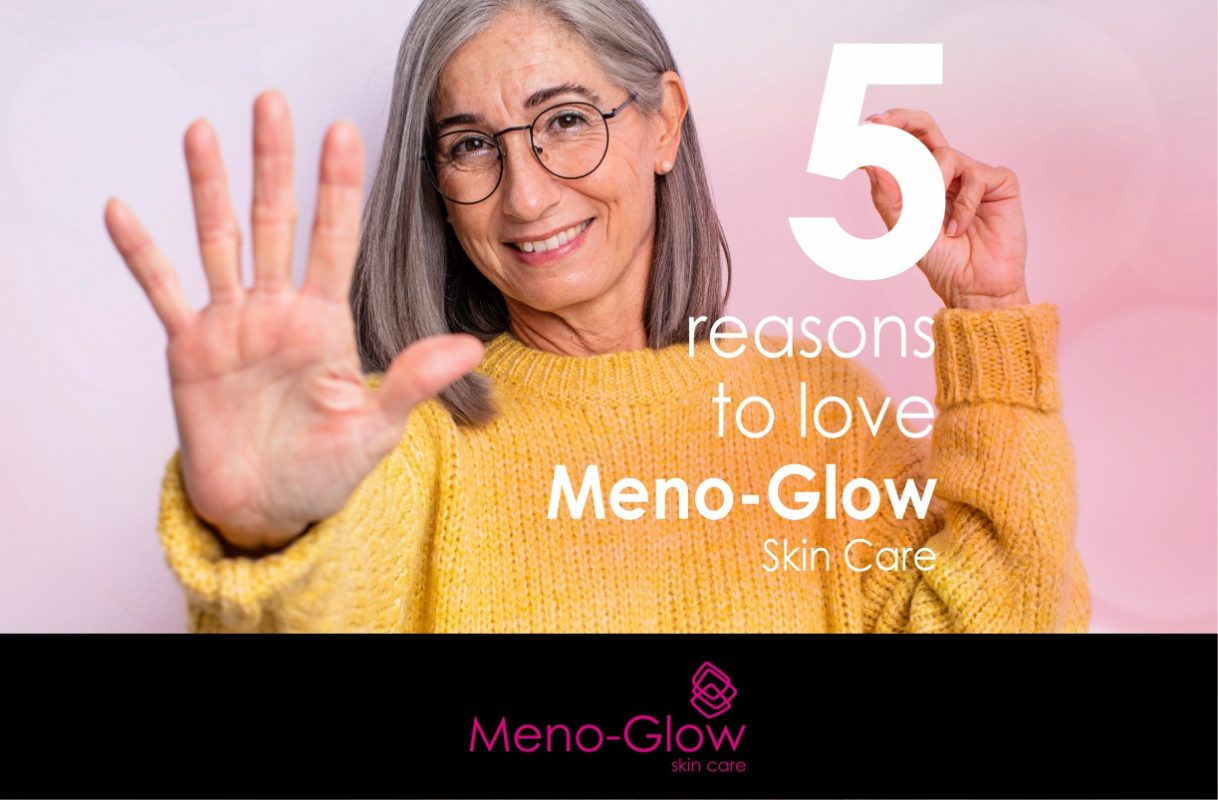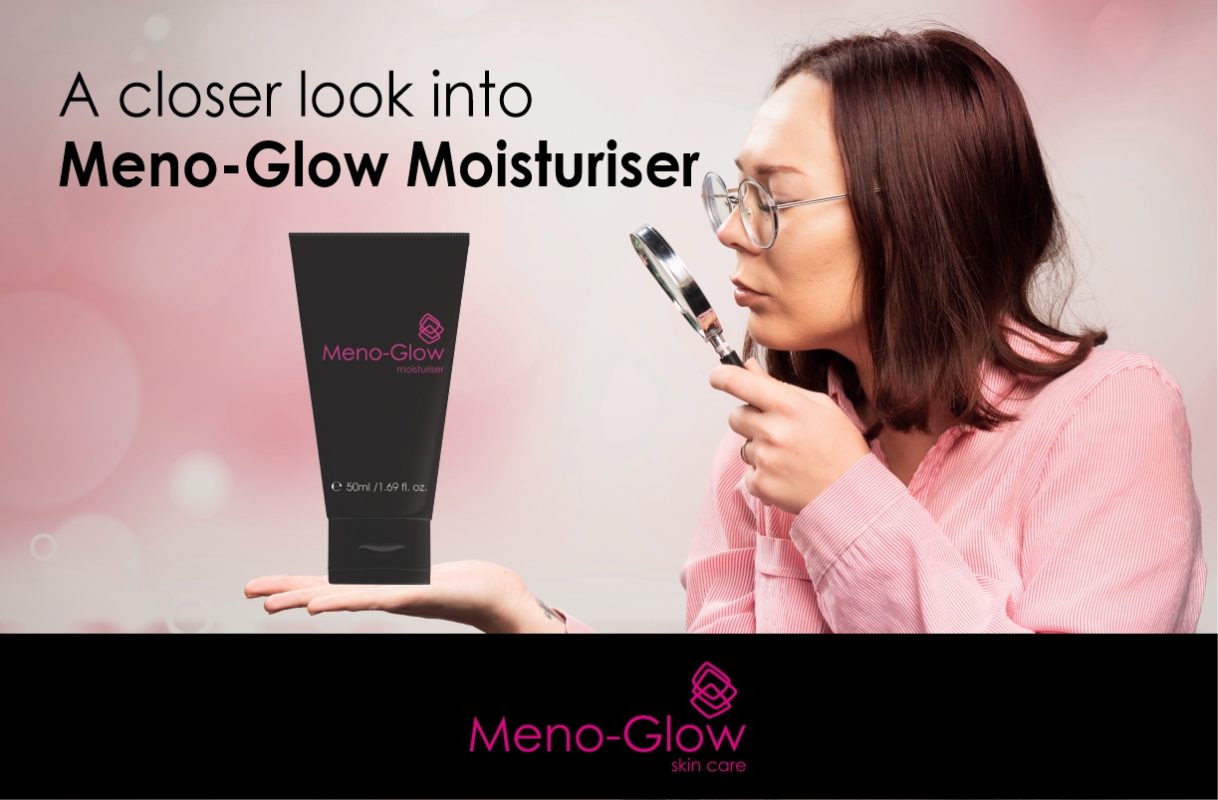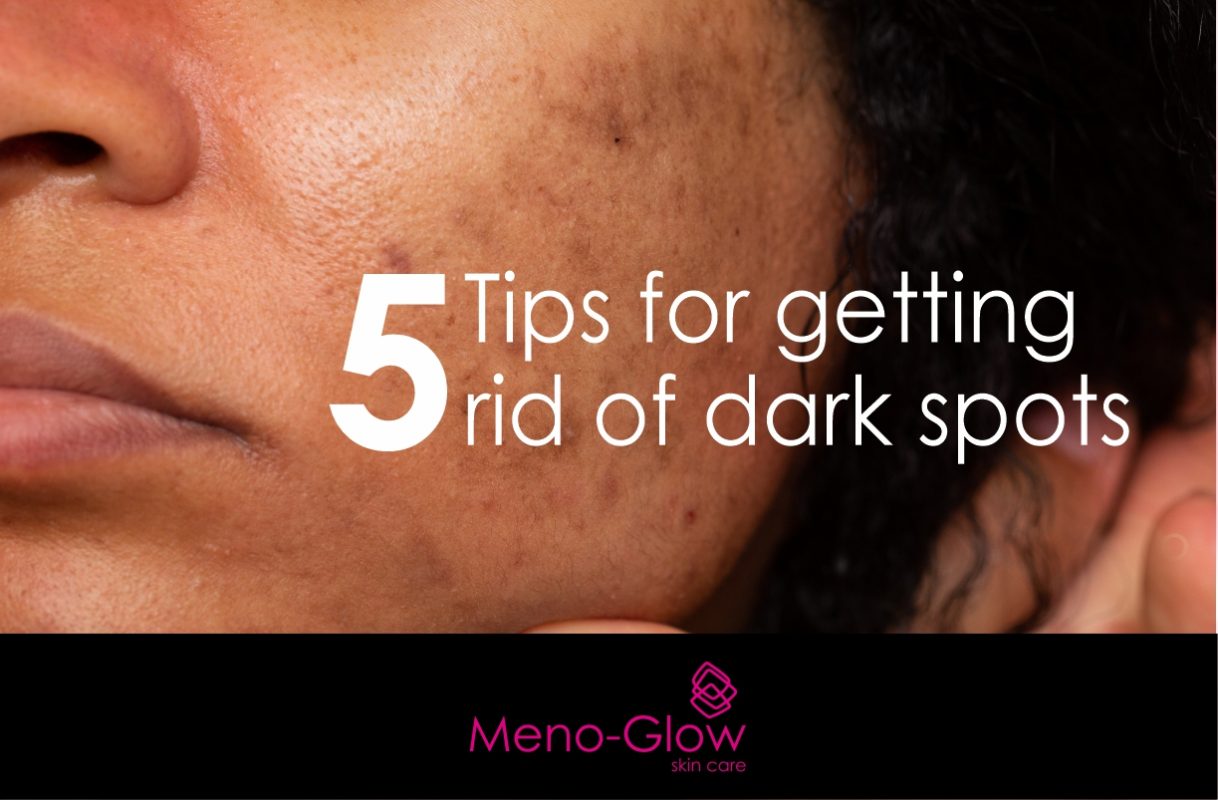It used to be called the “mask of pregnancy” because it happens so often to women in that condition. But melasma – those darker patches on your skin – isn’t limited to pregnant women.
These changes in pigmentation usually occur on the face, and while they aren’t dangerous, they can impact our self-confidence. As it seems to happen (or happen again) to many women in menopause, we thought we’d make it our Symptom of the Month.
To understand the condition, skincare tips, and what concerns it raises, we talked to dermatologist Dr. Keira Barr, author of The Skin Whisperer.
What are the causes of melasma?
Says Dr. Keira, “Melasma appears on women’s skin much more often than men’s skin. In fact, though over 5 million Americans are affected by melasma, 90% of them are women.
“What causes melasma is not yet fully understood, though current theories suggest that hormones, UV exposure, inflammation, and genetics are all major influencers of the disorder.”
“Melasma likely occurs when the pigment producing cells in the skin (melanocytes) produce too much pigment (or melanin),” Dr. Keira explains. “The underlying hormone responsible for triggering the melanocytes is melanocyte stimulating hormone (MSH). This hormone increases the production of melanin, which is responsible for darkening the skin.”
People with darker skin are more prone to melasma because they have more active melanocytes than people with light skin.
Hormone fluctuations. Says Dr. Keira: “At all stages of women’s lives, hormones can be in flux. When it comes to melasma, research has found that elevated levels of estrogen, and to a lesser degree elevated progesterone levels, are associated with increased skin pigmentation.
“This is why melasma is often seen during pregnancy, and in those women using oral contraceptive pills and hormone replacement therapy (HRT) – because hormonal levels are elevated and stimulate melanocytes both directly and indirectly to increase pigment production.”
Hormones + stress. Cortisol is part of the problem, says Dr. Keira, so avoiding stress where possible can help manage the condition. “As you become stressed (whether it be physical, psychological or emotional), your body produces increasing levels of the hormone cortisol to help cope with the stress.” More cortisol creates an imbalance in estrogen levels, Dr. Keira says, and “these elevated estrogens upregulates MSH levels, which in turn increases the amount of melanin produced. Re-establishing balance in stress and hormonal levels are one of the keys to prevention and management.”
Hormones + thyroid. Other hormones also have been shown to play a role in melasma, according to Dr. Keira. Studies highlight that individuals with thyroid disorders, specifically autoimmune thyroid conditions, had a higher incidence of melasma as well.
Exposure to sunlight and heat. “Ultraviolet (UV) light from the sun stimulates your melanocytes. This means that just a small amount of vitamin d or sun exposure can make melasma return after fading,” says Dr. Keira. “This is why melasma often is worse in summer due to higher levels of sun exposure. It also is the main reason why many people with melasma have recurrences…it comes back, again and again.”
Exposure can either trigger melasma, or contribute to exacerbation of the skin patches, according to Dr. Keira. “What’s more, the sun’s heat, and heat of any kind, is a common trigger for melasma as it increases vascular dilatation which is a component of this condition. In addition, heat may lead to more inflammation which can also stimulate melanocyte pigment production. What does this mean? Sun screens and other surface protection may not be enough to keep the skin from darkening.”
Genetics. While women constitute the vast majority of those with melasma, it’s not limited to women alone. In fact, says Dr. Keira, “Recent studies have found that melasma tends to run in families regardless of whether a man or women inherits the condition. In fact, one study showed that 70 percent of Latino men with melasma also had a family member with melasma.”
Irritation from skin care products: Be careful of how you treat your skin, says Dr. Keira. “If a product or procedure irritates your skin whether due to heat or friction resulting in trauma, melasma can worsen due to stimulating melanin production. This has been shown in association with intense pulsed light therapy, microdermabrasion and some chemical peels.”
How do you know it’s melasma and not something else?
Dermatologists can diagnose most patients by looking at their skin, Dr. Keira tells us. “What makes melasma a challenge for treatment is how deeply it penetrates the skin. The more deeply it penetrates, the more difficult it may be to treat. To determine how deeply the melasma penetrates the skin, your dermatologist may look at your skin under a device called a Wood’s light.
“There are instances when melasma can look like another skin condition. To rule out another skin condition, your dermatologist may need to remove a small bit of skin by performing a skin biopsy. A skin biopsy is a simple procedure that can safely and quickly be performed during an office visit.”
Is melasma dangerous?
Melasma caused by hormone changes is neither painful nor dangerous. However, since melasma can be caused by other conditions, like thyroid disease or allergic reactions, it’s wise to check it out to be sure of the underlying cause.
The pigmentation can fade or go away entirely when the cause is removed – some time after the baby is born and hormones settle, or if the patient stops taking hormones. However, the patches can last for many years or be permanent.
What are the most effective melasma treatments?
Melasma may, in time, go away on its own, but it can take time and vigilance. These tips, direct from Dr. Keira, can help manage the melasma as well as protect against recurrence.
- Limit sun exposure. The best melasma treatment is often prevention. As sun exposure is a leading trigger for melasma, sun protection is at the top of the list for both prevention and management of this condition. When heading outdoors wearing a broad-brimmed hat, sunglasses, and a broad spectrum sunscreen with at least SPF 30 is important. I prefer moisturizers and sunscreens with physical sunscreens like zinc oxide because it is tolerated by most skin types and less prone to cause irritation. It’s important to remember that damaging sun rays penetrate through a car window.
- Protect with good nutrition. Additional sun protection strategies include eating an anti-inflammatory diet rich in antioxidants and phytonutrients which means loading your plate full of colorful fruits, vegetables, healthy fats like olive and avocado oil as well as omega-3 fatty acids like salmon. Supplements to consider before heading outdoors include those that contain polypodium leucotomas, grape seed extract, green tea extract, astanxanthin and omega-3 fatty acids.
- Apply topical treatments. Talk with your doctor about the different topical treatments that are available. It’s important to have the right treatment for your skin type and lifestyle, so be sure to discuss all the options with a qualified professional.
- Hydroquinone: Commonly used as first-line treatment for melasma, it works by lightening the skin and is applied on the skin. It comes in varying prescription strengths as well as less-powerful over-the-counter varieties. One caveat: this medicine should be used sparingly and briefly as it can cause a darkening of the skin called ochronosis.
- Tretinoin and corticosteroids: Topical tretinoin (aka Retin-A) may be used to enhance skin lightening. Sometimes a combination of three medicines may be used in one “triple” cream: hydroquinone and tretinoin to help with skin lightening, and the corticosteroid to help alleviate any irritation caused by the other two medicines.
- Kojic acid: Kojic acid is naturally found in soy and mushrooms and works in melasma by decreasing the amount of pigment within the melanocytes. However, kojic acid has a high rate of contact sensitivity, so be careful to avoid skin irritation that could worsen melasma.
- Azelic acid: Azelaic acid works similarly to hydroquinone and may be paired with tretinoin as well to enhance the effects.
- Vitamin C (L-Ascorbic acid): Vitamin C is a natural antioxidant that prevents the absorption of UV radiation and the subsequent formation of free-radicals, so it prevents melanin from forming. It is well tolerated and can be used alone or in combination with other topical therapies.
- Niacinamide (Vitamin B3): Studies have shown niacinamide to be effective for melasma. Melanocytes produce melanosomes which give skin its color; niacinamide can block melanin transfer to the outer layers of the skin.
These therapies may work better when combined with a series of chemical peels with either Glycolic, Salicylic, or Trichloroacetic Acid. Peels and topical therapies should be adjusted according to skin type and under the guidance of your dermatologist for best results.
- Other treatments include micro needling, laser, microdermabrasion and light-based therapies. Only a dermatologist or highly trained professional under a dermatologist’s supervision should perform these procedures – worsening of melasma or new skin problems may occur when the person who performs the treatment does not tailor it to the patient’s skin type.
What can happen if it’s left untreated?
Treatment isn’t necessary for safety, says Dr. Keira, but there are implications to doing nothing. “As one of the major triggers is UV radiation exposure, continued exposure can lead to darkening of the skin and make melasma patches permanent. While it is a benign condition and treatment is not required, I have found the emotional and psychological impacts of melasma take the biggest toll for many individuals when the condition is left untreated.”
Anything else we need to know?
Melasma is caused or worsened by irritation, so be aware of everything you do to your skin, Dr. Keira adds. “Choose skin care products that are gentle on your skin. Avoid and discontinue products that sting or burn your skin, as those may worsen melasma. And avoid waxing: Waxing causes acute trauma to your skin and may cause skin inflammation which can worsen melasma, so it’s important to avoid waxing areas of the body affected by the condition. Ask a dermatologist about other types of hair removal that may be right for you.”
[divider width=”full”]By Shannon Perry
SOURCE: https://gennev.com/education/what-hormone-causes-melasma



